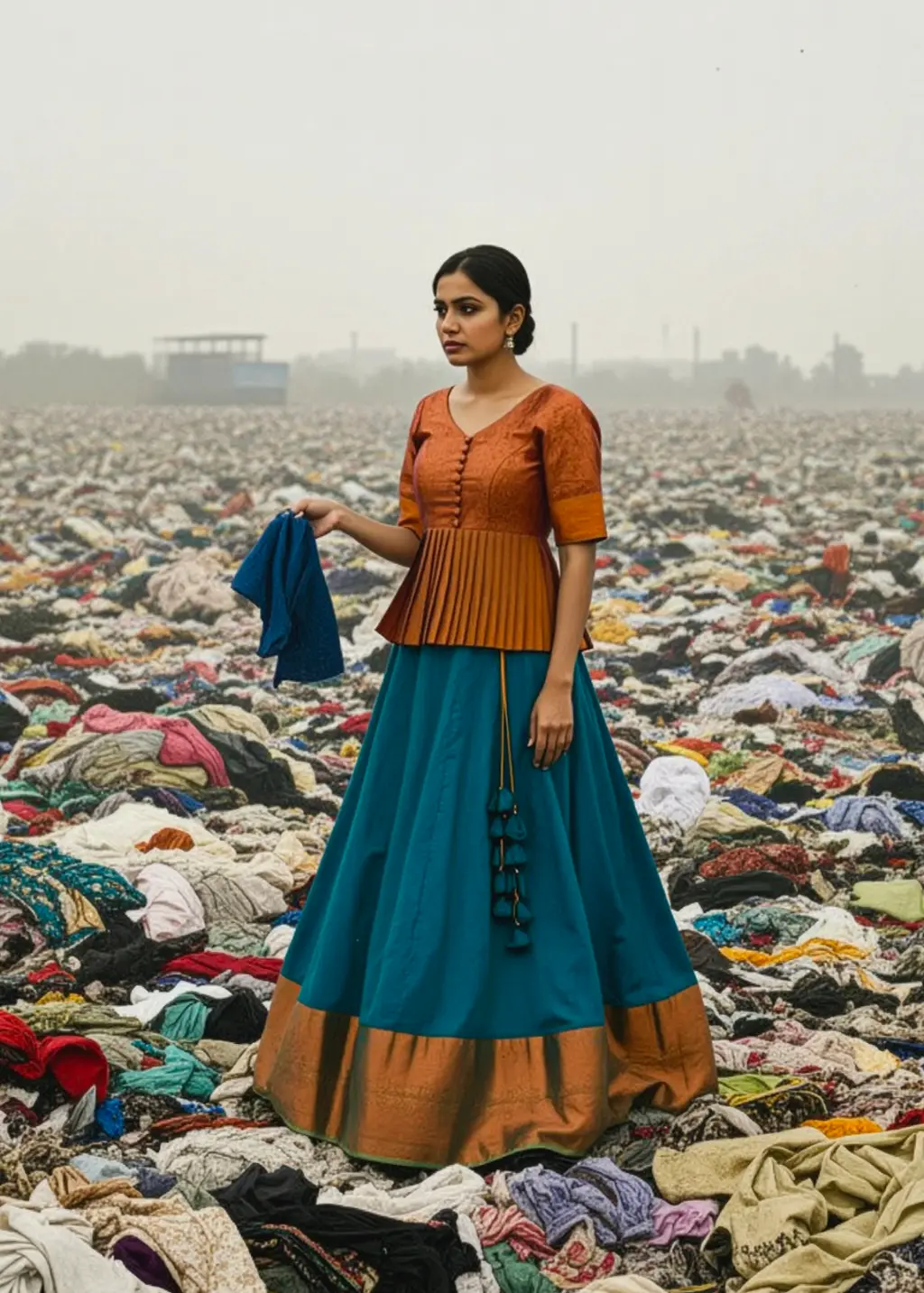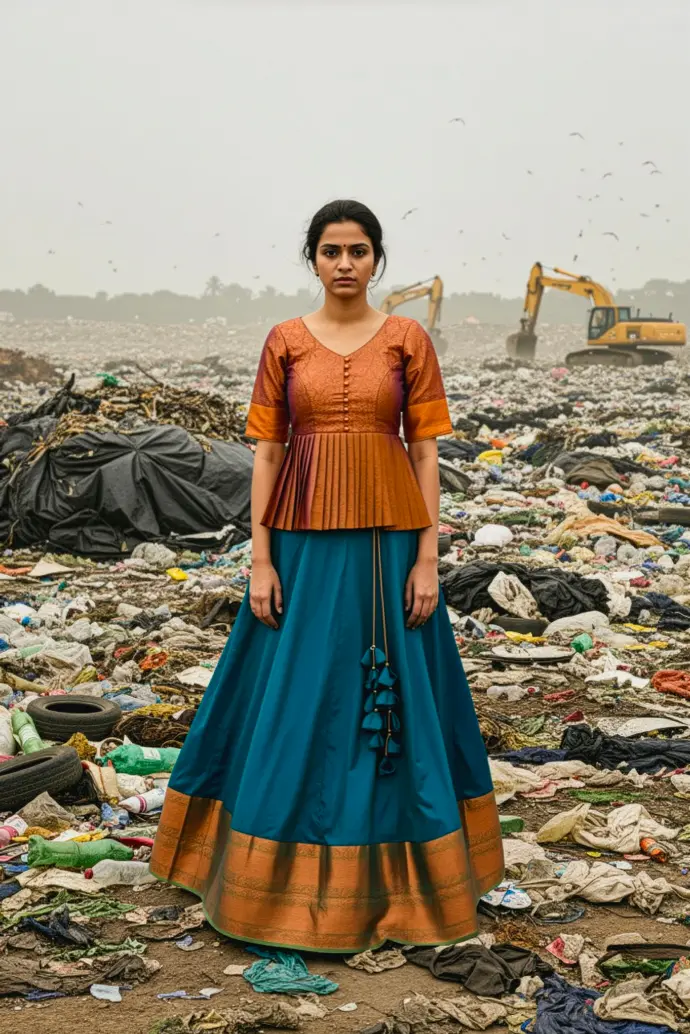An Eco-Friendly Fashion Trend
Redefining Saree to Lehenga Conversions
Discover modern sustainability in ethnic wear with this elegant designer ensemble by Usha Designer Studio, Vijayawada. Crafted by transforming a traditional saree, the set features a copper-toned peplum choli blouse with half-inch pleats, a flattering V-neck, and full sleeves. Paired with a deep teal-blue kalli cut lehenga adorned with a rich copper border and custom hand-crafted latkans, this look merges heritage craft with contemporary style.
Impact of Textile Waste Pollution
On Health and Environment
Textile
Waste Management
Globally, more than 92 million tonnes of textile waste are sent to landfills each year, which equates to nearly one truckload of clothing discarded every second. Fast fashion accounts for a significant portion, with an estimated 87% of total fibre input used for clothing ending up in landfill or incinerated annually instead of being recycled or reused. This growing problem underscores the urgent need for sustainable fashion and textile recycling solutions worldwide.
Only about 25–34% of India’s textile waste gets recycled or reused due to several key challenges: lack of efficient collection infrastructure, low public awareness, limited segregation practices, and a shortage of formal textile recycling units. Most discarded textiles are mixed with other solid waste, contaminating the materials and making recycling difficult or economically unviable.

Furthermore, a large portion of India’s textile waste comprises synthetic blends and fast fashion, which are much harder to process than pure cotton or natural fabrics, leading to increased landfill dumping and incineration instead of upcycling or fibre recovery.
Driving Sustainable Change in Fashion
How Usha Designer Studio Leads Textile Waste Reduction
Through innovative sustainable practices, consumer awareness, recycling initiatives, and effective waste management, Usha Designer Studio is shaping a greener future for fashion in Vijayawada and beyond.
A vertical bar chart has been created illustrating the impact of key strategies on reducing textile waste in the fashion industry. It shows four strategies with their estimated relative impact: Sustainable Practices (35%), Consumer Education (25%), Recycling Programs (20%), and Effective Waste Management (20%). This chart visually emphasises sustainable practices as the highest-impact strategy for textile waste reduction.
How to Tackle Fashion Waste
Efficient waste handling: Organisations such as Everything Managed play a vital role in managing textile waste responsibly, encouraging recycling, and decreasing reliance on landfills.
Pick-Up & Delivery - Cloud Tailoring
Usha Designer Studio’s Online Tailoring Services bring expert stitching and fittings to your home.


